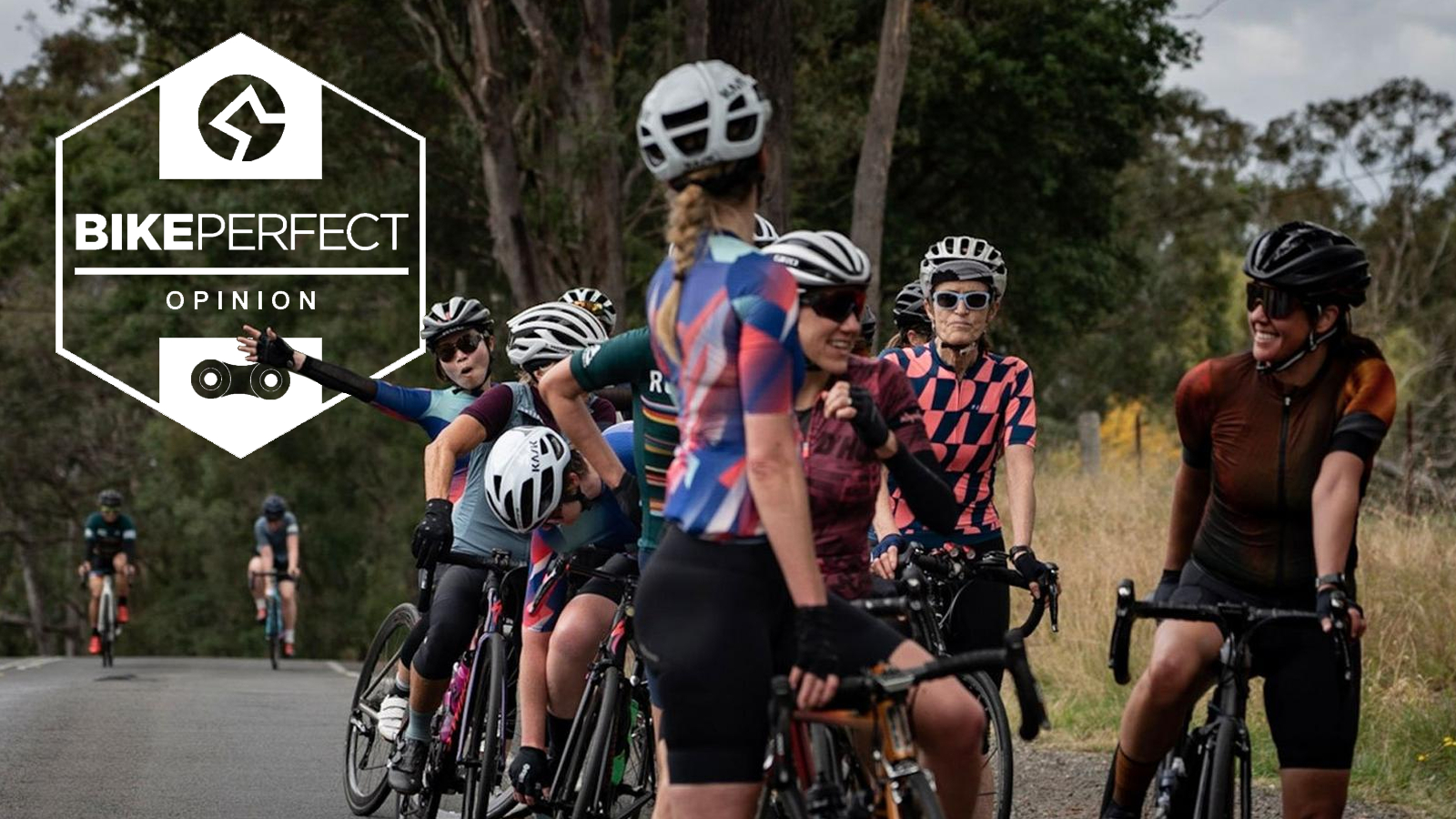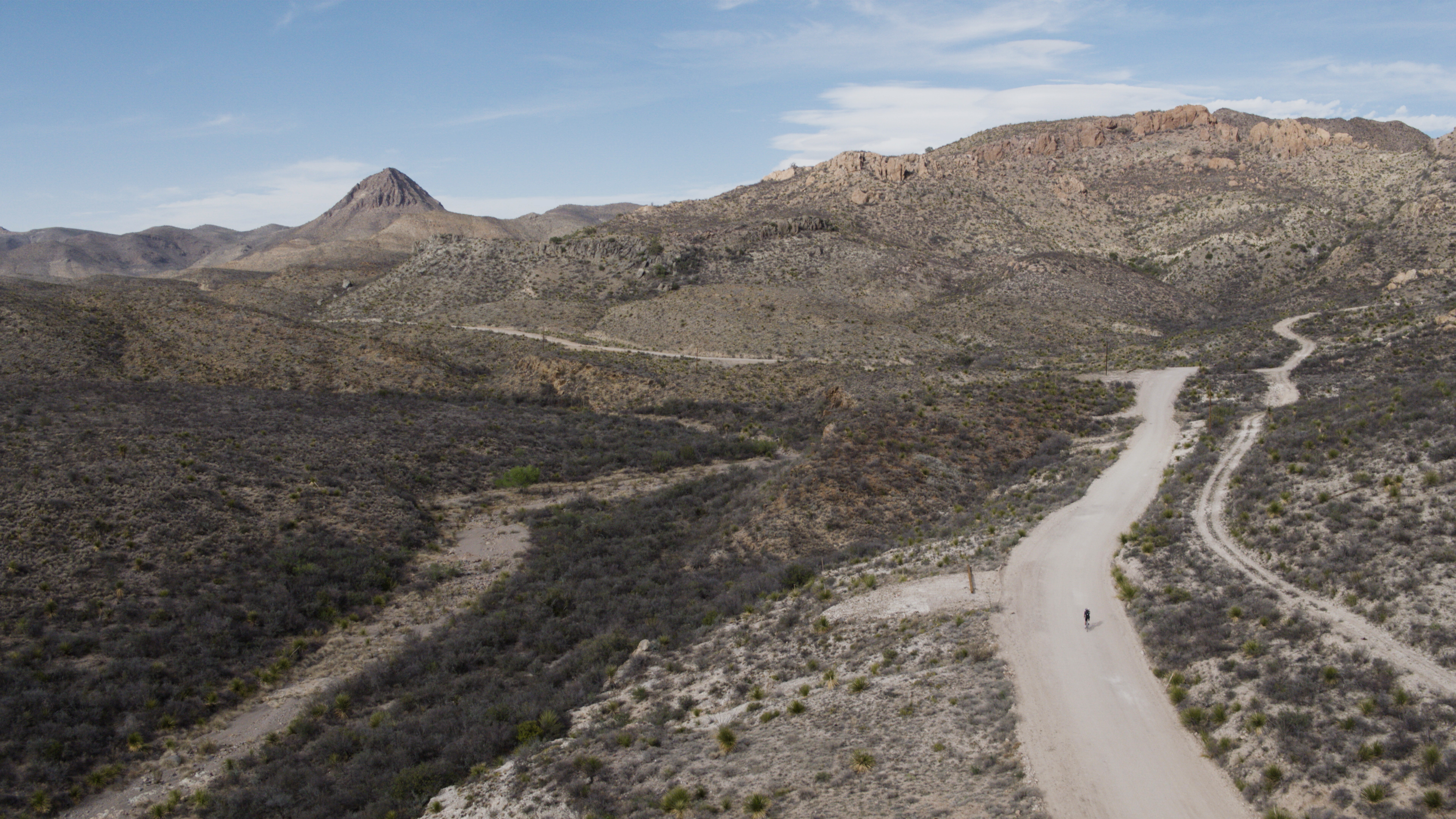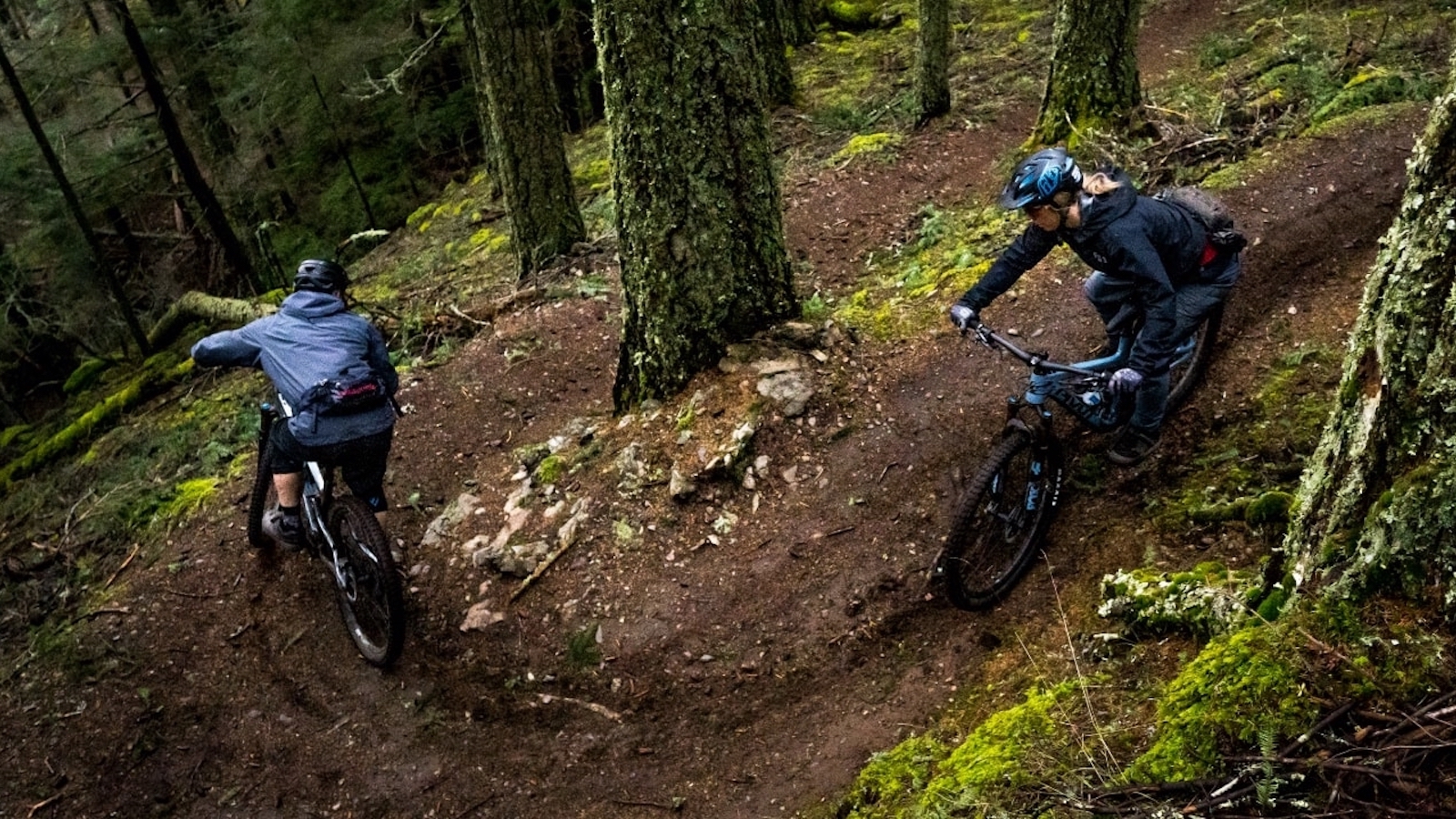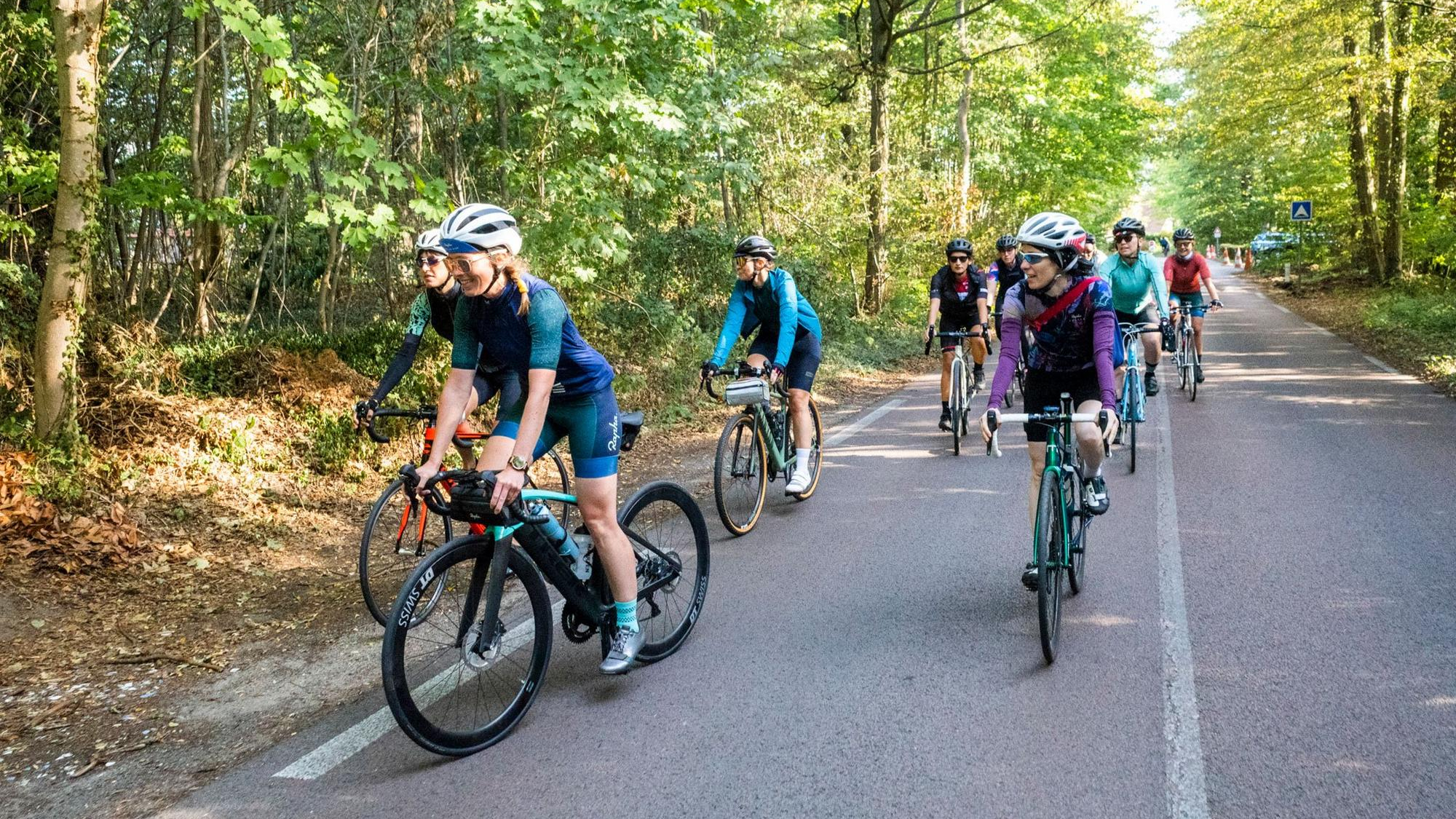Bespoken Word: Harder than we think
Guy Kesteven reminds us that simply riding a bike is a lot more impressive than us cyclists give credit

I don’t watch a lot of TV but occasionally I get dragged in front of the hypnobox by the family, and that often happens when cycling is on the agenda. Just to be clear I’m not talking about MTB World Cup or WorldTour Road action - that gets watched religiously as it happens - I’m talking about shows where normal people are flung into what we’d generally regard as very unchallenging ‘challenges’ involving bikes. But while sitting with my horribly scathing and critical daughters (I’ve raised them well) last week, howling with delighted derision at the on-screen antics it got me thinking.
What we take for granted is actually a lot tougher than it looks and perhaps we should remember that the next time we’re having our egos crushed watching the elites.

If you’re into specifics, the programs that triggered these thoughts were ‘On Yer Bike for soccer aid’ on ITV and ‘Race to the centre of the earth’ on Discovery Channel. On Yer Bike saw two teams of various celebs - mostly from TV - ride road bikes on three stages across the Yorkshire Dales in filthy weather under the quizzical motivational gaze of Bradley Wiggins (on a motorbike). 'Race to the centre' had four teams (including climbers, Alaskan cops and runners/fitness addicts) on a multi-day adventure race including various climbing, canoeing, navigating, running and - crucially - e-MTB stages.
And whatever the participant's history, the feedback was pretty much unanimous. Hills were “never-ending” and descents were a terrified, often hysterical scream fest. To be fair, I know the climbs the ‘On Yer Bike’ challenge tackled and some of them are pretty brutal, with steep twisting descents where it’s really easy to get into trouble in the dry, let alone storm conditions. So asking people with no fitness background and no idea how to change gear, let alone brake or corner safely or ride in a group efficiently is a big ask.
The ‘Race to the centre’ crew was clearly a cut above in terms of fitness and experience but to be honest, they weren't tackling particularly taxing terrain. In fact, most people reading this would have been fine on an unpowered gravel bike let alone a long travel e-MTB. But even back to back with serious climbing, kayaking, rappelling, trail running, pack horsing and off-road driving challenges - it was the e-MTB sections where they massively struggled. Crashes were continual, fingers were dislocated, wrists knackered, 'fitness freaks' rolled around with agonizing cramp and sensitive areas were screamed about repeatedly. In quite specific detail.
And this got me thinking about just how hard riding a bike can be when you’re looking in from outside, even when the results we see from the inside can sometimes be deeply depressing.
Even at a basic level steering a bike and keeping it upright even on a flat road is way more challenging than walking and running - not to mention an evolutionary upstart compared to many millennia of bipedal locomotion. Add in anxiety punishing physics that means the slower you go the harder it is to control the bike and it’s an uphill struggle even if you’re not going uphill yet. And when you do things get harder much faster. Not only from a cardiovascular point of view but in terms of picking the right gear at the right time and modifying your pedaling to make the shift happen smoothly. Kind of like driving but with two gear sticks (on the road at least) and while gasping for breath with no engine to take the strain. Oh and interestingly, it was the engines that caused a lot of the problems on the e-bikes as bikes surged, choked, spun wheels and consistently behaved a lot less predictable than the horses on the pony trek sections in ‘Race to the centre’ - well, apart from that one incident where a cowboy guide got kicked down a hill.

And where we ride throws in a whole other level of challenge. Even on a simple man-made flow trail with a preset risk assessment, there’s a kaleidoscope of shifting of Venn diagram overlaps of body position, speed - managed by several different levers - line choice, ground condition assessment and forward planning to second guess what might happen next and how best to prepare. Hit natural trails and the reaction times and relentless risk assessments and ride alterations spiral savagely all chipping away at that confident rolling speed that’s about your only friend. Until you can’t stop in time for a big drop you didn’t somehow sixth sense might be coming from a subconscious scan of changing geology and topography in your peripheral vision.
And while road riding might reduce the potential threats to a lower frequency, you’re now immersed in a far more hostile ecosystem. Can you imagine how many people would sign up for a Park Run if there was a constant stream of cars and trucks flying past inches away at 60mph? If people swore at you, clipped your elbows with wing mirrors if you (legally) ran two abreast, slammed on their brakes so you hit them if you followed them in traffic or nudged you if you dared to go into the box marked for your safety at a junction. Or the fact you can often open any newspaper, general media website, overhear comments at ‘friends party’ or bar and be guaranteed that to find anti-cyclist views of such an ill-informed, prejudicial and dangerously confrontational level that they should be classed as a hate crime.
Blimey, that got a bit dark suddenly.

So let’s cheer ourselves up by looking at the joys of the technical side of mountain biking. The tire pressures, suspension settings, brake and gear adjustments, saddle positions, route decisions, weather watching, clothing choices etc. can all make a big difference to comfort, control, achievement and enjoyment. All things we’re supposed to be fluent in and which are made even harder by the tsunami of options and differing advice from a cohort of idiots like me or that bloke who just rode past you or decided to wade in on yet another online forum about tires. I mean if it takes me so long to decide what to ride, in what clobber and where to go after doing it for decades, how hard is it to take those first wobbling meters, whether you've been on 'I’m a celebrity, get me out of here' or are just trying to escape normal life for a bit.
But thinking about just how hard what we casually do on a regular basis highlights the fact that with so much against us, maybe we need to get behind ourselves a bit more. OK so you braked too hard into that corner, you could be a bit fitter, you can’t wheelie very well, you can't take off a coat no-handed while riding in a race pack at 60kph like they do in the Tour de France, and you can’t even work out what they’re doing in the air at Crankworks anymore. But just by going out on your bike you’re doing something pretty damn impressive that should be celebrated, appreciated and applauded and we should extend that empathy towards others.
Even that Irish girl off Love Island who got off her bike and refused to get back on again - despite Bradley’s best cajoling - got halfway up the black arrow evil of Dibble’s Bridge climb.
Being a bike rider at any level isn’t easy, but then that’s a big part of the joy and addictive fascination of it.

Guy Kesteven has been working on Bike Perfect since its launch in 2019. He started writing and testing for bike mags in 1996. Since then he’s written several million words about several thousand test bikes and a ridiculous amount of riding gear. He’s also penned a handful of bike-related books and he reviews MTBs over on YouTube.
Current rides: Cervelo ZFS-5, Specialized Chisel, custom Nicolai enduro tandem, Landescape/Swallow custom gravel tandem
Height: 180cm
Weight: 69kg
